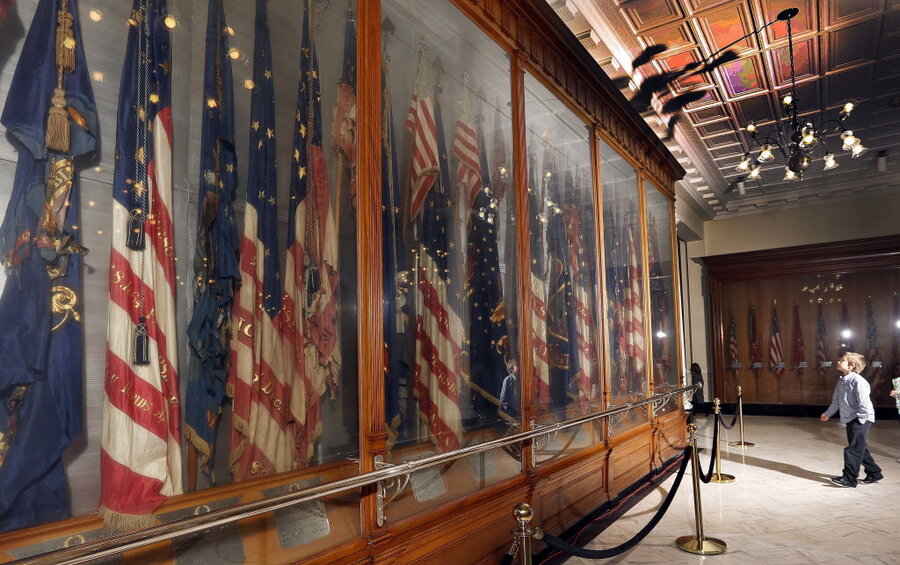As US celebrates Flag Day, one state ponders how to preserve flags of yore
Loading...
Flag Day commemorates the adoption of the American flag on June 14, 1777, and brings into the spotlight the many flags over the course of American history under which citizens have rallied. As the flags age, historians wonder if it will be possible to preserve them for generations to come without removing them from public view.
More than 100 battle flags poignantly remind visitors to New Hampshire’s State House of the people who have served the United States in the Civil War, Spanish American War, World Wars I and II, and Vietnam.
New Hampshire’s adjutant general requested in 1864 that 88 Civil War flags under which New Hampshire’s men marched off to battle should be permanently displayed for the public.
"The old standards, pierced by shot and shell, dyed with the blood of our bravest and best, and hallowed by associations with the glorious fields and the noble dead, are priceless relics of the great contest,” he wrote.
Just over 150 years later, New Hampshire’s lawmakers and historians are seeking a way to maintain the prominent display of the flags without losing them altogether to deterioration, a challenge shared by state houses, museums, and libraries nationwide that display historical relics.
Gwen Spicer, a conservator who has restored flags across the country, devised a plan to sew New Hampshire's flags to netting to keep them from falling apart. But a legislative historical committee scrapped the plan several months ago.
One opponent of Ms. Spicer’s plan is Republican House Speaker Shawn Jasper whose great-great-grandfather marched to battle under two of the displayed flags. He said he wants all the flags to remain up in the Hall of Flags until after the State House celebrates its bicentennial in 2019.
The Hall of Flags is a memorable first stop for the thousands of New Hampshire fourth-graders who tour the State House each year, and lawmakers worry that refurbished flags might not have the same impact as those in their original state.
"They see real blood stains on there, real smoke, real bullet holes, and then they hear the story and they're absolutely thrilled to see them," Joint Legislative Historical Committee Chairman David Welch told the Associated Press.
Spicer argues that there won’t be much of the flags left to see unless lawmakers act. The way the flags hang now creates stress on the old material, and exposure to light and temperatures speeds up deterioration.
"Part of doing nothing, letting them fall to dust, is that there is no documentation of this collection," Spicer told the AP. "We're not able to actually tell the full story that they have the potential to tell."
This report contains material from the Associated Press.






